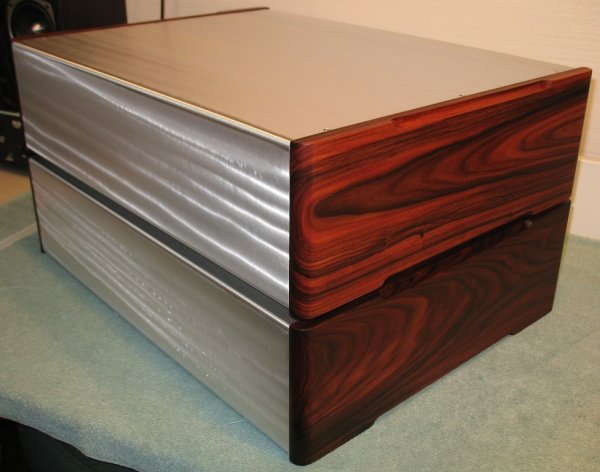Thank you for your answer, Gary. Much appreciated and actually incorporated.

Thank you as well, microstrip. Duly noted. The real estate within the enclosure has been thought about, exactly for the reasons aforementioned by you. As for the wall, I'm quickly swaying away from that but thank you for your thoughts. Just an FYI, yes, I actually am a newcomer to this area as I'm sure many of you can tell.
Seen below is a better picture of the external crossover enclosure I was referring too. This should show the swirl pattern I was talking about in better detail.

After a 3 hour long conversation last night, we have tweaked the original plans [again, without even looking within the speakers to see what we are
actually looking at]. Right now, here are the preliminary plans and I will reserve the right to change plans once again at a moments notice.
Tweeter Network -
Clarity Cap MR
Clarity Cap ESA 250v Shunt
Jantzen or ERSE perfect lay (DCR match)
Midbass Network -
Clarity Cap ESA 630v
Clarity Cap ESA 250v
Stock which should be a low DCR film inductor
Woofer Network -
Clarity Cap ESA 250v
ERSE Perfect Lay Air Core (if DCR is a match, will have to run test)
Internal Wiring -
Supra Rondo 13 awg x 2, directly soldered - no connectors
Wiring from speaker to crossover
One NL4 for the tweeter/midbass
One NL2 for the bass drivers
Same connections on the enclosure, this will make it where there is only one way to hook up the speaker as a NL2 will not fit in a NL4 panel mount.
Supra Rondo 13 awg x 4 for the umbilical wire
External enclosure will feature a completely isolated platform for the components, as seen in previous photos [not shown here] with all of the wiring underneath.
Rubber isolation feet for the enclosure to start with until I decide on the mounting/isolation design or implementation and Ribbon Mahogany sides. Yeah!!!

Any suggestions or comments are more than welcome and once again, I'd like to thank those who have responded thus far. I really can't remember having so much fun along my audio journey before and I'm excited and really looking forward to eventually hearing the end results as to what hits my ears with this project.
? Let the good times Roll ?
Tom


